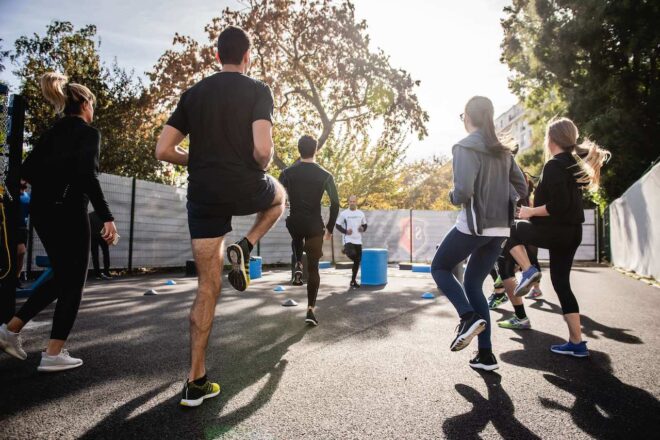A good warm-up and stretch routine is an essential must-do before any intense exercise. Running is no exception. It’s not smart to just throw on some jogging clothes and peace out on your run without a little preparation.
Do your warm-up groundwork, and you will quickly see (and feel) a difference in your performance. And you’ll avoid a few nasty injuries too. Knowing how to stretch before running can make all the difference between a good run and a total misstep.
In This Article:
Why Is It Important to Stretch Before Running?
Why are you running anyway? Most likely to keep fit and get a little exercise in while also finding some time to destress and meditate.
When you run, you want to make sure you remain (or get more) healthy and not open yourself to injuries. Research shows that 40–50% of runners suffer from some form of issues.
Normal, everyday running can result in:
- Muscle tears
- Wearing down of joints
- Ligament damage
- Muscle soreness
- Spinal disc compression
- Fatigue
Research also shows that any intense physical workout without warming up can lead to injury. Just 5–10 minutes of warming up and stretching may help prevent all of the common problems associated with running. A solid warm-up will also enable you to build better endurance, so you can run longer and without difficulty.
Static vs. Dynamic Stretching
There are two types of stretching that you, as a runner, should become familiar with: dynamic and static stretching.
Dynamic stretching – short, active movements of a muscle group. This type of stretching is typically done in repetition, and each individual stretch focuses on a specific muscle area. Static stretching, on the other hand, focuses more on joints and pulling (or pushing) them as far as they will go over a period of time.
Both dynamic and static stretching have their benefits, but a simple rule to live by would be to focus on dynamic stretches before running as a warm-up and save static stretches for after during your cool-down.
Dynamic Stretches Before Running
The goal of dynamic stretching before a run is to wake up the muscles and get the blood flowing to the body parts that will be under stress with the upcoming physical activity. There are tons of great dynamic stretches out there. Here are few examples for each of the major muscle groups:
Shoulders
- Shoulder rotations
- Jumping jacks
- Arm circles
Lower Back
- Walking lunges with a torso twist
- Trunk rotations
- Double-knee torso rotation
Hips
- Leg pendulum
- Small hip circles
- Bicycle kicks
Hamstring
- Hamstring raises
- Stationary foot grab
- Knee to chest
Ankle and Calf
- Walking lunges
- Calf raises
- Toe touches
What Should You Do for a Warm-Up?
It makes sense to follow a warm-up and stretching routine before subjecting your body to high-impact running. Stretching helps increase flexibility, improves your range of motion, reduces stiffness, boosts circulation, and increases endurance.
Here’s what you can do:
- Start by running briefly in place.
- Do brisk walking before your jog.
- Jump rope for 5–10 minutes.
- Do hamstring raises.
- Do some stretching and flexing exercises.
- Try leg swings.
Additional Warm-Up Routines
While the ones above are easy enough to do, you may want to try something else to vary your routine or if you feel the need.
Try strides – no, not lengthening your stride, which can be dangerous and result in injuries. Jog for a few minutes and then increase your speed and run for up to 100 meters and then back. It should take around 30 seconds. Stand still and walk around in place. Do this 4–6 times as a warm-up. Strides will help build endurance and enable you to run for longer without fatigue.
If you are not sure which warm-up routine is good for you, you can always check with a physiotherapist, a personal trainer, or a running coach.
Key Takeaways
- If you get injured on the run, you will not be able to continue running, so do your best to prevent them.
- Many different warm-up routines will get you going, and you should select one that you are comfortable with and that works for you.
- 5–10 minutes of warm-up is all you need – whether you run for speed or distance or both, you can invest a few minutes in preventing a range of injuries.














